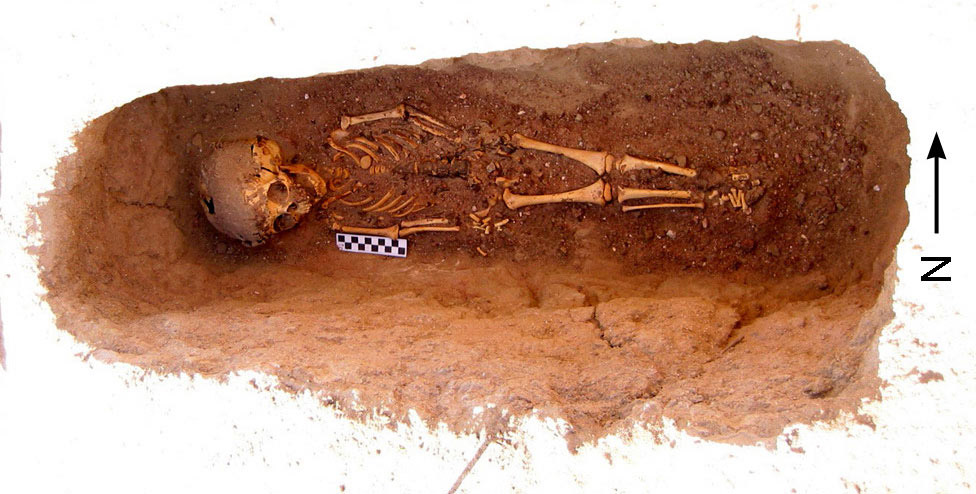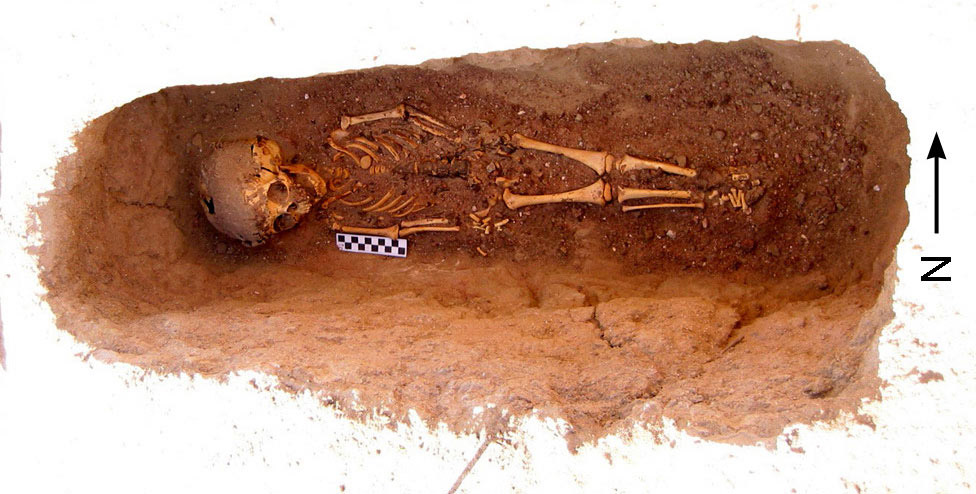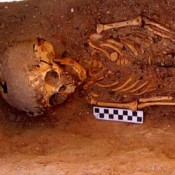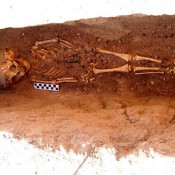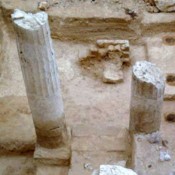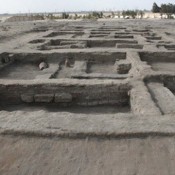Τhe remains of a toddler who showed evidence of child abuse have been discovered in Kellis 2, a Romano-Christian-period cemetery belonging to the settlement of Kellis, in Dakhleh Oasis, Egypt.
The child, who lived around 2,000 years ago, had been buried in an ordinary burial (registered as Burial 519 by the archaeologists) in the cemetery which was used between AD 50 and AD 450. However, a close examination of the bones showed prominent fractures on the child’s arms and collarbone. “We have some other kids that show evidence of skeletal trauma, but this is the only one that had these really extreme fracture patterns.”, says lead researcher, bioarchaeologist Sandra Wheeler (University of Central Florida). A series of tests, including x-ray work, histology (microscopic study of tissues) and isotopic analyses demonstrated further fractures throughout the body, in places like his forearm, ribs, pelvis and back.
Whereas no particular fracture is diagnostic of child abuse, the pattern of trauma suggests it occurred. Additionally, the injuries were all in different stages of healing, which further signifies repeated nonaccidental trauma.
Among other finds, the researchers deduced that someone had grabbed the child’s arms and used them as handles to shake the child violently. Other fractures were also likely caused by shaking, but some injuries, including those on the ribs and vertebrae, probably came from direct blows. The archaeologists aren’t sure what ultimately killed the toddler. “It could be that last fracture, which is the clavicle fracture,” Wheeler said, referring to the collarbone. “Maybe it wasn’t a survivable event.”
Child abuse in the archaeological record is rare.A few cases of possible child abuse have since come out of France, Peru and the United Kingdom, all of which date back to medieval times or later. Given the above as a fact, the Kellis 2 case represents the earliest documented case of child abuse in the archaeological record, and the first case ever found in Egypt.
It has to be added that children were a valued part of ancient Egyptian society. On the contrary, the Romans were engaging their children in somehow torturing practices, trying to “harden them up” so that they become powerful adults. Of the 158 juveniles excavated from the Kellis 2 cemetery, Burial 519 is the only one showing signs of repeated nonaccidental trauma, suggesting child abuse wasn’t something that occurred throughout the community.
We know that the ancient Egyptians really revered children,” Wheeler said. “But we don’t know how much Roman ideas filtered into Egyptian society,” she added, suggesting that the unique child abuse case may have been the result of Roman influence.
